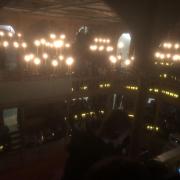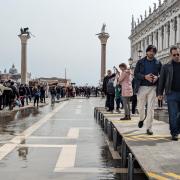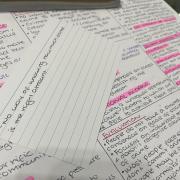
Calling all art enthusiasts and poetry buffs:
TateBritain’s latest exhibition on the late great William Blake is not one to miss.
Perhaps most applauded for his epic and intense poetry, the 18th century “glorious luminary” also expressed himself in many other creative mediums, and the current work being exhibited at the Tate focusses on his underappreciated skill in painting and printing. Staying true to Blake’s characteristically vivid and grand designs written in his poetry, the poet and painter’s work both conforms to the Romantic Age and strays away into bold religious imagery. His work is in equal proportions of beauty and absurdity and it somehow works when translated into his simple watercolour postcards that are elevated by the intricate compositional ideas laid down by pencil.
The exhibition moves through six grand rooms with walls adorned with his own work or commissioned portraits of Blake painted by his contemporaries. It houses a whopping 300 original works – the largest William Blake exhibition in over two decades. I found the exhibition to be very accessible even with my basic knowledge of art and it was fascinating to delve into the imagination of one of Britain’s sharpest ever minds. His idiosyncrasies are not dismissed but are instead framed in a positive light, where any suggestion of Blake possibly dealing with mental illnesses are expressed as being a factor in his ingenuity. For example, we learn that his ‘visions’ from a young age were the foundation of much of his most memorable work such as the poem ‘The Tyger’ and ‘The Ancient of Days’. Memorable moments from the display include Blake’s sketches and work based on ‘Songs of Innocence and Experience’ and the fantastic recreation of his own studio which captured the way outside light would have illuminated his enormous paintings, creating an other-worldly and spiritual atmosphere that at Blake’s best, he manages to create.
The only downside to this otherwise engaging spectacle of the many gems of a mad and brilliant national treasure would have to be the occasionally sparse information accompanied by some of Blake’s pieces. I would have loved to learn more about the reception to and meaning of Blake’s etchings and not just the process by which he made his prints. There was ample information given about his craft, but not quite as much dissection of his artwork. The audio-guide available for purchase at the door did quite a bit to alleviate this slight issue, however the titillating artistic analysis offered comes at an extra fee that some might not feel inclined to cash out on.
For insight into the world of Blake, this exhibition is an excellent opportunity to feel the full effects of his overwhelming and rebellious artwork and to see how it coincided with his own personal grievances and served as an outlet at a time of oppression and political instability. The exhibition is open till 2 February.
Amala Sangha





























